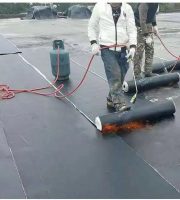Construction drawings are the basis for building houses and “the language of Engineering”
.
They specify what kind of building to build, and specify the shape, size, practice and technical requirements
.
In addition to more contact with the drawings of this type of work, sometimes it is necessary to read the drawings in combination with the whole engineering drawings, so as to cooperate with each other and make no mistakes
.
Therefore, we must learn the method of map recognition to get twice the result with half the effort
.
Here are some basic methods of map recognition
.
(1) after getting a drawing step by step, the first and second steps should be in the following order: first, read the design description carefully to understand the general situation, location, elevation, material requirements, quality standards, construction precautions and some special technical requirements of the building, so as to form a preliminary impression in thought; Secondly, we need to look at the plan to understand the plane shape, bay, depth, column grid size of the house, the arrangement of various rooms and traffic layout, as well as the location of doors and windows, so as to form a plane concept of the building and lay a good foundation for looking at the elevation and section; thirdly, we need to look at the elevation to understand the changes in the orientation, number of floors and height of the building, as well as the requirements of doors, windows and exterior decoration (4) look at the section to get a general understanding of the elevation changes and indoor conditions of each part of the section; (5) finally look at the structural drawing to get a better understanding of the relationship between the plan, elevation, section and structural drawing, so as to deepen the understanding of the whole project; (6) in addition, it must be read in detail according to the index symbols in the plan, elevation, section and so on Read the detail drawing or node drawing, and combine the thickness with the size
.
Only step by step, can we understand the design intention and the design drawings, that is to say, we should generally “read the instructions first and then the drawings; the best order is plane, vertical and sectional; check the node and detail; read the building structure in comparison”, so as to get twice the result with half the effort
.
(2) as a way to keep in mind, although there are various kinds of architectural engineering, they all have different shapes and effects through the change of the size of each part
.
As the saying goes: “no rules, no square”
.
If there are no specific dimensions such as length, width, height and diameter on the drawing, the construction personnel can’t carry out the construction according to the drawing
.
But there are many dimensions on the drawing
.
As a specific operator, it is not necessary and impossible to remember all the dimensions on the drawing
.
However, some of the main dimensions of the building, the specification, model, location and quantity of the main components and fittings must be firmly remembered
.
This can deepen the understanding of the design drawings, is conducive to construction operation, reduce or avoid construction errors
.
Generally speaking, we should keep in mind the following dimensions: the depth of the Bay should be kept in mind, and the length and width should not be forgotten; the vertical and horizontal axis should be kept in mind, and the total height of the story is very important; the structural dimension should be kept in mind, and the component model should be correct; the foundation size is the key, and the structural strength should not be less; the beam column section should be firmly recorded, and the door and window openings should be well reserved
.
(3) make clear the relationship
.
When looking at the drawings, we must make clear the relationship between each drawing
.
Because a drawing can not express the specific size, practice and requirements of each part of a project in detail
.
Many drawings must be used to express the practices and requirements of a certain part from different aspects
.
The practices and requirements of these different parts are a complete panorama of the building
.
Therefore, there is a close relationship between the drawings of a construction drawing
.
When looking at the drawing, we must take the axis number and position in the plan as the benchmark, so as to “have the drawing in hand, the axis in mind, thousands of heads and thousands of threads, and never go offline everywhere”
.
This is the basic foundation and the main relationship between the standard drawings
.
Generally speaking, it is mainly as follows: the axis is the datum, and the numbers should match; the elevation should be intersected, and the height should be equal; the location of the section should be shown in the detailed drawing index; if the standard drawing is used, the lead-out line should be indicated; the requirements and practices should be indicated quickly; the civil engineering and installation should be clear of holes, ditches and troughs; the materials and standards should be included in the relevant drawings Check: buildings and structures should be compared before and after
.
Therefore, to make clear the relationship between the drawings is an important part of looking at the drawings and a basic measure to find problems and reduce or avoid errors
.
(4) grasp the key
.
When looking at the construction drawings, we must grasp the key in each drawing
.
Only by grasping the key can we grasp the key and make fewer mistakes
.
In general, we should grasp the following aspects
.
(1) key points in the plan: there are some common mistakes in the construction
.
For example, “the door is opened from the inside to the outside, the axis is center to center, the direction is southeast to northwest, and the wall is a few bricks thick.”
.
The door has an opening direction in the plan, but the window has no opening direction
.
It can only be determined by checking the detail drawing
.
Whether the axis is in the center or out of the center on the wall, which floor is in the center and which floor is out of the center, must be made clear, so as not to cause the axis error, so as to avoid mistaking all the axes as the center line
.
The orientation of the house must be made clear
.
If there is a compass on the drawing, the compass shall prevail
.
If there is no compass, the orientation on the general plan and general description shall prevail
.
In general, the plan of buildings should conform to the law of up north down south, left West right east
.
We should also carefully check the wall thickness of each axis and each part
.
For example, which wall is one brick thick and which wall is half brick thick, we must not make a mistake
.
(2) in the elevation drawing, it is necessary to master the elevation size of the door and window openings, so as to avoid mistakes when erecting the height pole and reserving the windowsill
.
(3) in the section, the floor elevation and roof elevation should be mastered
.
Some also need to master the indoor openings, inner door elevation, floor practices, roof insulation and waterproof practices through the profile
.
(4) in the structural drawing, we should mainly master the design requirements, specific size, location, connection relationship between foundation, wall, beam, column, slab and roof system, as well as the materials used
.
(5) understand the characteristics of industrial buildings to meet the requirements of various production processes, there are different characteristics in the design and construction
.
For example, in the acid treatment workshop, different treatment methods are required for the acid resistance of walls and floors; in the precision instrument workshop, different dust-proof, constant temperature and humidity requirements are required for doors, windows and walls
.
Civil buildings have different features due to different functions
.
For example, because of the special requirements for acoustics, there are different treatment methods and technical requirements for ceiling and wall in cinemas
.
Therefore, when you are familiar with each construction drawing, you must understand the characteristics and requirements of the project, including the following aspects: ① foundation treatment scheme and required technical standards; ② treatment requirements for special parts; ③ quality standards for materials or technical requirements for special materials; ④ parts needing attention or prone to problems; and ⑤ Special construction technology of new technology, new structure and new materials; some technical indexes and special requirements proposed in the design; key parts in the structure; requirements and materials for indoor and outdoor decoration
.
Only by understanding the characteristics of an engineering project can we better and comprehensively understand the design drawings and ensure the special needs of the project
.
(6) the chart compares a complete construction drawing, including not only various drawings, but also various tables
.
These tables specifically summarize the practice, size, specification and model of each sub project, which are an integral part of the construction drawing
.
The common tables in construction drawings are as follows
.
(1) the indoor and outdoor practices table mainly describes the specific practices of indoor and outdoor parts, such as how to do outdoor plinth, how to do the floor of a room, etc.
.



